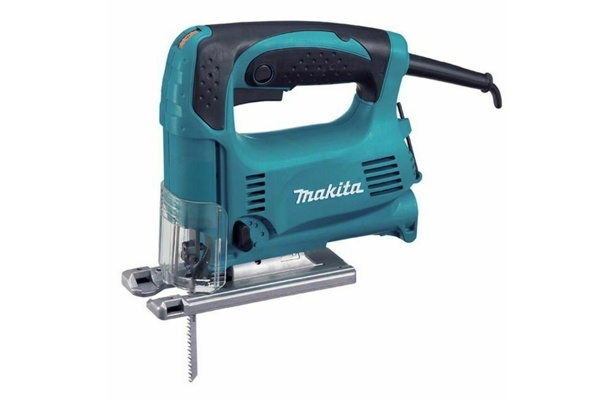From cutting through a PVC pipe or a log of wood to making cuts of a particular depth at certain angles, you always need the best saw for home projects and DIYers. Besides, it’s useful whether you are working on a minor home renovation or a major repair.

Whether you are just starting out or are a seasoned expert, you would know that, besides nails and hammers, there is another essential tool for your home and DIY projects. Yes, we are talking about a saw!
Best Saw for Home Projects and DIYers
However, buying a saw isn’t a simple task. You will come across different types of saws in the market, labeled as best saws for home projects. Each of them is designed for a particular purpose. To help you choose the right kind of saw, we have listed some of the best-equipped saws as follows:
Reciprocating saw
You might not have heard much about a reciprocating saw. This saw is relatively more expensive and heavier as compared to other lightweight saws.

However, if you need a saw to cut through hard metals with ease, a reciprocating saw is what you need. The Milwaukee Electric Tool Corporation developed it in 1951.
It is one of the best saws for home projects that takes care of all solid metals. For example, such a saw is ideal for fitting a window, sanding holes, cutting out sill plates, cutting and replacing PVC pipes, and so on.
Be it fine cuts, wooden cuts, straight cuts, or cuts for pruning; a reciprocating saw is ideal for any cut on materials such as metals, wood, etc.
Circular saw
Another useful saw for home projects and DIY activities is a circular saw. Its compact size, lightweight design, and extra portability make it a handy tool to have. As the name suggests, the type of blade used in this saw features a circular blade that can seamlessly cut through a range of materials.

If your home and DIY projects require cutting of wet wood or hardwood, concrete, and other similar materials, a circular saw is a perfect tool for you.
Although you can find multiple circular saws in the market, the two most commonly used types are sidewinder and table circular saw. While the former is a hand-held saw, the latter is mounted on a table for stability.
The table saw is the best circular saw for home use as it can cut through hard plywood, soft timber, and even workpieces harder than wood. With a circular saw, you can make vertical cuts, overhead cuts, plunge cuts, miter cuts, and crosscuts, to name a few. These cuts depend on the type of saw you are using.
Miter saw
A miter saw is quite similar to a circular saw in construction and basic applications. However, there are some small but critical differences between the two, one being the miter box. For example, if you want precise cuts at different angles, you should go only for a miter saw.

That’s because a miter saw is usually mounted on a workstation. It gives it more stability against a hand-held circular saw. Furthermore, the infeed and outfeed support of a miter saw also helps in the cutting.
Moreover, there are three basic types of miter saw — a sliding miter saw, compound miter saw, and sliding compound miter saw.
In a sliding miter saw, the blade is mounted on the metal track. The blade allows you to cut wider materials using the forward motion of the blade. A sliding miter saw is heavier and more expensive than a compound miter saw.
The second is the compound miter saw, and it is the best miter saw for DIY projects. This saw has its blade mounted on the arm. It uses downward motion for cutting.
This allows you to make deeper cuts than the sliding saw. You can make different cuts using a compound miter saw, such as crosscuts, beveled cuts, etc.
Lastly, a sliding compound miter saw uses both a sliding miter saw and a compound saw. It has the cutting capacity of the sliding miter saw, and the flexibility of a compound miter saw.
A miter saw works best for home projects such as framing, installing moldings, cutting wider materials, and so on. It can be used for precision cuts, bevel cuts, miter cuts, etc.
Portable table saw
A portable table saw is known for its compact size and portability. It usually mounts over a table for cutting through different types of wood, metals, and other carpentry materials.

The most common demarcation in the best portable table saw for home use is the number of teeth per inch (TPI). To get accurate cuts, you would need a portable saw with higher teeth.
Such a saw is useful for a variety of applications, such as producing a variety of cuts across materials such as wood, metal, etc.
The possible cuts with a portable table saw include cross cuts, bevel cuts, rip cuts, groove cuts, dado cuts, and many others.
Hand saw
A traditional hand saw is a necessary tool for your home and DIY projects that include wood. Thanks to its large blade and sturdy handle, a hand saw can easily cut through different types of wood.

Though a hand saw is 100% manual in nature and requires extra effort, it comes in handy where powered saws may not. For example, a hand saw is suitable for crosscutting through even a thick log of wood.
Different hand saws have different purposes based on the teeth per inch. For example, a rip saw with at least five teeth per inch is suitable for cutting wood lengthwise with its grains.
Similarly, a crosscut hand saw with at least 10-12 teeth per inch is ideal for cutting wood across the grain of the wood. The different cuts you can make using a hand saw include straight cuts, deep cuts, bevel cuts, and so on.
Japanese hand saw
A Japanese hand saw is another compact yet useful saw for your home and DIY projects such as leveling a surface, trimming the rough, extra edges off of a material, etc.

It’s an important part of Japanese carpentry and is still in use in countries such as China, Iran, Iraq, Korea, Nepal, and Turkey.
The most common difference between a Japanese hand saw and the traditional hand saw is that the former cuts on the pull stroke, while the latter cuts on the push stroke.
Due to this, a Japanese hand saw is easier to use for home projects and DIY activities. Another good thing about it is it’s less costly and suitable for beginners.
Hack saw
A hack saw is an industrial and modern version of the traditional hand saw. While the traditional hand saw has a wooden handle with an irreplaceable blade, the same isn’t true for a hack saw.

A hack saw uses a metal handle with an easy-to-replace blade. Such a tool is suitable for cutting PVC pipes, tubes, wood, and metal sheets. If you want to make straight cuts and precision cuts, get yourself a hack saw.
Jigsaw
A jigsaw is another hand-held cutting tool used for cutting different shapes. Unlike the other saws listed here, a jigsaw also works well with plastics, ceramics, and metals.

Another advantage is that this saw allows you to cut the material at any angle by tilting the saw as much as you want.
If your DIY project is a decorative craft or a birdhouse, you should use a jigsaw. The different cuts you can make with a jigsaw are angled cuts, bevel cuts, etc.
Chain saw
A chain saw is the biggest, heaviest, and most expensive saw on this list. It is mainly used for outdoor home improvement activities.

Furthermore, it includes dozens of sharp teeth that rotate at a quick rate. A chain saw is used chiefly for cutting unwanted tree limbs or to fall an entire tree.
The blades on a chain saw are mounted around the guide bars at varying lengths. For example, guide bars suitable for pruning and light cutting are around 14-inches long, while other guide bars can be as long as 36-inches. Lumberjacks use the latter.
For your home projects and DIYs, a guide bar of 18 to 20-inches length is sufficient. You can use a chainsaw of your desired size for cutting firewood and trimming long trees too.
Conclusion
Whatever home project or DIY activity you are taking up, you should focus on the type of saw that your task requires. Pick your saw based on your need, and if in doubt, you have our article to help you make the right choice.
In a nutshell, you should use only the right saw for your projects at home or other DIYs to get the best results.

Leave a Reply